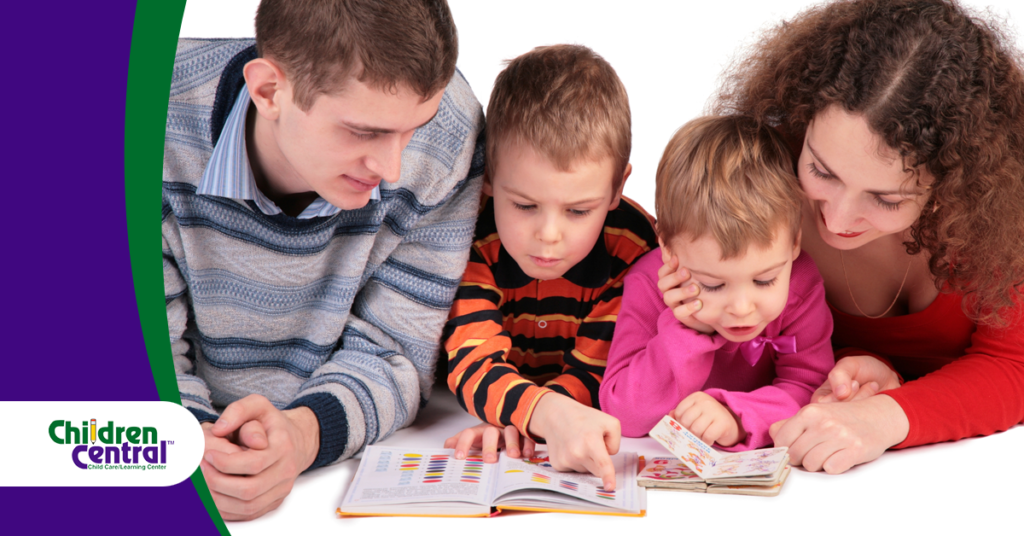Teaching Spanish to kids at home can be a fun and enriching experience for both children and parents. As children are naturally curious and quick learners, incorporating Spanish into everyday activities allows them to absorb the language while having fun.
From interactive games to playful songs, you can easily turn your home into a vibrant language-learning environment. In this guide, we’ll explore 15 exciting and effective ways to make learning Spanish a natural part of your child’s day, fostering a love for languages that will stay with them for years.
1. Create a Daily Routine for Teaching Your Child Spanish at Home
Establishing a daily practice is one of the most effective ways to introduce Spanish to your child. By incorporating the language into everyday activities, you can make learning seamless and engaging. Here are a few practical tips to help you develop a fun and consistent Spanish routine at home:
- Morning Greetings: Start the day with simple phrases like “Buenos días” (Good morning) and “¿Cómo dormice?” (How did you sleep?). Repeating these phrases helps your child become comfortable with basic conversational Spanish.
- Mealtime Conversations: Use meal times to introduce food-related vocabulary. For example, ask, “¿Te gusta el pan?” (Do you like bread?) or “¿Dónde está el agua?” (Where is the water?).
- Chore-Time: Turn everyday chores into Spanish-learning moments. Use commands like “Recoge los juguetes” (Pick up the toys) or “Ayúdame a limpiar” (Help me clean).
- Bedtime Routine: End the day with a Spanish lullaby or a bedtime story in Spanish. This can be comforting to reinforce the language while building a peaceful nightly tradition.
2. Games as the Best Way to Teach Spanish
Games are a fantastic way to teach Spanish because they combine fun and learning effortlessly. Children naturally engage with play, making it one of the best ways to teach Spanish while keeping them entertained. Here are some interactive games that can turn language lessons into exciting adventures:
- Simon Says in Spanish (“Simón dice“): This classic game is perfect for teaching action words like “brinca” (jump) and “corre” (run). Start with typical commands and gradually introduce new vocabulary to keep the game fresh and challenging.
- Scavenger Hunts: Create a scavenger hunt in which your child has to find objects based on Spanish clues, such as “Busca algo azul” (Find something blue) or “Encuentra un libro” (Find a book). This reinforces both vocabulary and listening skills.
- Memory Card Games: Use flashcards with Spanish words and pictures. Have your child match the word to the picture while saying the word aloud. This helps build their vocabulary while improving concentration.
3. Interactive Storytelling to Teach Spanish at Home

Storytelling is powerful for language learning, as it encourages imagination while introducing new vocabulary and sentence structures. Teaching Spanish at home through interactive storytelling engages your child in a fun, immersive way. Here are some ideas to bring storytelling to life:
- Bilingual Storybooks: Start with simple bilingual books with English and Spanish text. As you read, ask your child to identify words they recognize or encourage them to repeat phrases after you.
- Acting Out Stories: After reading a story in Spanish, act it out with your child. Use props and simple phrases like “Vamos a volar” (Let’s fly) or “Corre rápido” (Run fast). This method combines language learning with physical activity, making it more engaging.
- Create Your Own Stories: Encourage your child to create their own stories using the Spanish words they’ve learned. They can draw pictures with the story and describe what’s happening in Spanish. This activity sparks creativity while reinforcing vocabulary.
4. Sing Songs and Nursery Rhymes in Spanish
Music is an excellent way to reinforce language learning, as songs help with memorization, pronunciation, and rhythm. Singing Spanish songs and nursery rhymes with your child creates an enjoyable learning experience while building their vocabulary and listening skills. Here are some ideas to get started:
- Popular Spanish Nursery Rhymes: Introduce well-known rhymes like “Los pollitos dicen” (The little chicks say) or “Estrellita, ¿dónde estás?” (Twinkle, Twinkle, Little Star). These songs use repetitive phrases, making it easy for your child to follow along and learn new words.
- Create a Sing-Along Routine: Make singing part of your daily routine. Sing songs during car rides, bath time, or while getting ready for bed. Repetition will help your child become familiar with common Spanish words and phrases.
- Combine Actions with Songs: Teach simple dance moves or hand gestures to accompany the lyrics. This helps children associate words with actions, deepening their understanding of the language.
5. Cooking Together with Spanish Instructions
Cooking is an interactive, hands-on activity that offers plenty of opportunities for language learning. Teaching Spanish through cooking introduces new vocabulary and fosters cultural appreciation. Here’s how to incorporate Spanish into your kitchen adventures:
- Introduce Food Vocabulary: Use meal prep to teach words for common ingredients like “tomate” (tomato), “pan” (bread), and “queso” (cheese). Label items in the kitchen or have your child repeat the names as you cook together.
- Follow Simple Spanish Recipes: Find easy recipes written in Spanish and walk through them with your child. Read instructions like “mezcla los ingredientes” (mix the ingredients) or “hornea por veinte minutos” (bake for 20 minutes) to teach cooking-related terms.
- Counting in Spanish: Encourage your child to count ingredients like eggs or cups of flour in Spanish. This reinforces numbers while they practice following instructions.
6. Label Household Items in Spanish
One of the simplest yet most effective ways to immerse your child in Spanish is by labeling common household items. This visual approach reinforces vocabulary as your child encounters the words in their everyday environment. Here’s how to make the most of this activity:
- Create Labels for Everyday Objects: Use sticky notes or printable labels to mark items like “puerta” (door), “mesa” (table), and “silla” (chair). Place these labels around your home so your child can easily see them.
- Practice Vocabulary in Context: Refer to these items in Spanish throughout the day. For example, you could say, “Cierra la puerta” (Close the door) or “Pon el libro en la mesa” (Put the book on the table). This allows your child to associate the written words with actions.
- Switch the Labels Periodically: To keep it fresh and challenging, rotate the items you label. Focus on different rooms or categories, such as kitchen utensils one week and toys the next.
7. Spanish Arts and Crafts Projects
Arts and crafts provide a creative, hands-on way to teach Spanish while your child enjoys expressing themselves. You can introduce new vocabulary and reinforce key concepts by incorporating Spanish into craft time. Here are a few engaging ideas:
- Learn Colors and Shapes: While working on a craft, teach your child the Spanish names for colors and shapes. For example, say, “Corta un círculo rojo” (Cut a red circle) or “Pinta el sol amarillo” (Paint the yellow sun). This helps your child associate colors and shapes with their Spanish names.
- Create Spanish Flashcards: Turn craft time into a learning activity by making homemade flashcards. Have your child draw pictures of everyday objects and write the Spanish words underneath, such as “gato” (cat) or “árbol” (tree). Use the flashcards for review after the craft session.
- Seasonal Crafts with Spanish Themes: Celebrate holidays or seasons with themed crafts. For example, during the winter, you can create snowflakes while teaching words like “invierno” (winter) and “nieve” (snow). This makes learning more exciting and memorable.
8. Outdoor Spanish Adventures

Taking learning outside can be a refreshing way to engage your child in Spanish. Nature offers countless opportunities to teach new vocabulary and encourage active learning. Here’s how to make the most of your outdoor adventures:
- Learn Nature Vocabulary: While on a walk, point out plants, animals, and weather in Spanish. For example, you can say, “Mira el árbol” (Look at the tree) or “El cielo está azul” (The sky is blue). This provides real-world context for the words your child is learning.
- Play I-Spy in Spanish: Make a game out of your nature walk by playing I-Spy in Spanish. You can say, “Veo algo verde” (I see something green) or “Veo un pájaro” (I see a bird). This helps playfully reinforce colors and nature-related vocabulary.
- Bilingual Scavenger Hunt: Create a scavenger hunt with Spanish clues like “Encuentra una hoja” (Find a leaf) or “Busca una piedra” (Look for a rock). This encourages active participation and reinforces listening and comprehension skills.
9. Flashcards for Quick Vocabulary Building
Flashcards are a simple yet practical tool for helping your child build their Spanish vocabulary. They offer a visual and interactive way to reinforce new words and concepts. Here’s how to make flashcard learning engaging:
- Create Personalized Flashcards: Make or buy flashcards with common Spanish words and pictures. You can also have your child help create the cards by drawing images and writing the corresponding Spanish word, such as “perro” (dog) or “sol” (sun).
- Use Flashcards for Games: Turn flashcard practice into a game. You can play memory matching games, where your child pairs the picture with the correct word. Another idea is to time how quickly they can match the word with its meaning.
- Daily Flashcard Review: Set aside a few minutes each day to review the flashcards. Start with a small set and gradually add new cards as your child becomes more confident. Repetition helps with retention, making this a great daily practice.
10. Host a Family Spanish Game Night
Turn family time into a fun language-learning opportunity by hosting a Spanish game night. This interactive approach brings everyone together, making language practice enjoyable for both kids and adults. Here’s how to get started:
- Spanish Bingo: Create bingo cards with Spanish vocabulary words, such as colors, animals, or household items. Call out the words in Spanish and have players mark them on their cards. This helps reinforce listening skills and vocabulary recognition.
- Charades in Spanish: Play a game of charades in which everyone must act out actions or words in Spanish. For example, act out “bailar” (to dance) or “comer” (to eat) while others guess the word. This makes learning verbs and everyday actions more exciting.
- Pictionary with Spanish Words: Use a whiteboard or paper to draw pictures based on Spanish words, such as “casa” (house) or “gato” (cat). The rest of the family can guess the word in Spanish, turning language learning into a visual, creative activity.
11. Watch Spanish Cartoons and TV Shows

Screen time can be a valuable language-learning tool when used strategically. By introducing Spanish cartoons and TV shows, you can expose your child to authentic language use in a fun and engaging way. Here’s how to make the most of it:
- Select Age-Appropriate Spanish Shows: Find educational or entertaining Spanish-language shows that match your child’s age and interests. Shows like Dora la Exploradora or Pocoyó introduce basic vocabulary and phrases in a playful context.
- Watch Together and Discuss: Sit down with your child and watch the show together. Pause at key moments to explain new words or ask questions like, “¿Qué dijo el personaje?” (What did the character say?). This encourages comprehension and active listening.
- Follow Up with Related Activities: After watching, reinforce the vocabulary by acting out scenes from the show or drawing pictures of characters while discussing them in Spanish. This helps solidify what your child has learned.
12. Create a Spanish Learning Corner
Designating a special area in your home as a Spanish learning corner can make language practice feel more intentional and engaging. This space can serve as a dedicated area for activities, books, and materials that make learning Spanish fun and interactive. Here’s how to set it up:
- Decorate with Visual Aids: Fill the space with posters, flashcards, and labeled objects in Spanish. You can include colorful charts that show common phrases, numbers, or the alphabet in Spanish. Visual aids help reinforce vocabulary through constant exposure.
- Include Spanish Books and Puzzles: Stock the area with Spanish-language children’s books, bilingual storybooks, and puzzles. Make this the go-to spot for daily reading and quiet playtime, allowing your child to engage with the language through hands-on activities.
- DIY Spanish Learning Board: Create a chalkboard or whiteboard to introduce a new Spanish word or phrase daily. Encourage your child to use the word in sentences throughout the day and change the word weekly to keep learning fresh.
13. Use Spanish Apps for Extra Practice
Incorporating technology into language learning can be highly effective, especially when using child-friendly apps designed to teach Spanish. These apps combine fun, interactive elements with structured lessons, making it easier for children to practice Spanish independently. Here’s how to make the most of Spanish learning apps:
- Choose Engaging Spanish Apps: Look for apps like Duolingo, Gus on the Go, or Endless Spanish for kids. These apps use games, stories, and challenges to introduce and reinforce vocabulary, pronunciation, and basic sentence structures.
- Set Daily Practice Time: Dedicate 15-20 minutes daily for your child to use the app. This routine helps reinforce what they’re learning, and the short bursts of practice keep it manageable and fun.
- Track Progress and Celebrate Achievements: Many apps have progress trackers or offer rewards for completing lessons. Celebrate your child’s achievements, such as unlocking new levels or mastering a set of vocabulary, to keep them motivated and excited about learning.
14. Storytime in Spanish with Family
Reading together as a family is a wonderful way to bond and reinforce language learning. Incorporating Spanish into storytime boosts your child’s vocabulary and makes the learning experience more interactive and enjoyable. Here’s how to turn family storytime into a Spanish learning adventure:
- Read Bilingual Books Together: Choose books with Spanish and English text. Switch between languages or focus entirely on the Spanish sections as you read. Encourage your child to repeat words or phrases after you to build their confidence.
- Take Turns Reading in Spanish: Involve the entire family by taking turns reading aloud in Spanish. This could mean each person reads a page or paragraph. Hearing different voices and pronunciations helps your child grasp the nuances of the language.
- Ask Questions in Spanish: As you read, ask your child questions about the story, such as “¿Qué pasó aquí?” (What happened here?) or “¿Cómo se llama el personaje?” (What is the character’s name?). This encourages comprehension and critical thinking.
15. Incorporate Spanish Into Daily Chores
Daily chores offer an excellent opportunity to reinforce Spanish learning while completing household tasks. You can seamlessly integrate language practice into everyday routines by giving instructions and encouraging your child to communicate in Spanish. Here’s how to make chores a language-learning experience:
- Use Simple Spanish Commands: Give instructions in Spanish for common chores, such as “Lava los platos” (Wash the dishes), “Barre el suelo” (Sweep the floor), or “Guarda los juguetes” (Put away the toys). This helps your child learn action words in context.
- Encourage Descriptions: As your child completes tasks, ask them to describe what they‘re doing in Spanish. For example, “Estoy limpiando la mesa” (I’m cleaning the table) or “Voy a doblar la ropa” (I‘m going to fold the clothes). This reinforces vocabulary while building sentence structures.
- Turn It Into a Game: Make chores fun by creating a challenge or timed activity. You can say, “Vamos a recoger los libros en un minuto” (Let’s pick up the books in one minute). Adding a playful element motivates your child while keeping the learning light and enjoyable.
Conclusion
Teaching your child Spanish at home doesn’t have to be complicated—it can be a fun, exciting, and rewarding journey for the whole family! By incorporating creative activities like games, songs, storytelling, and even chores, you’re helping your child develop valuable language skills enjoyably and naturally. With a little consistency and enthusiasm, these 15 ideas will inspire your child to love learning Spanish while strengthening their communication skills and cultural understanding. Each activity fits seamlessly into your daily routine, making language learning something you all look forward to.
Ready to take your child’s language learning to the next level? Contact us at Children Central today! We’re here to support your family’s educational journey. Visit us at our contact page or call us at (215) 398-1076 to learn more about our programs!



